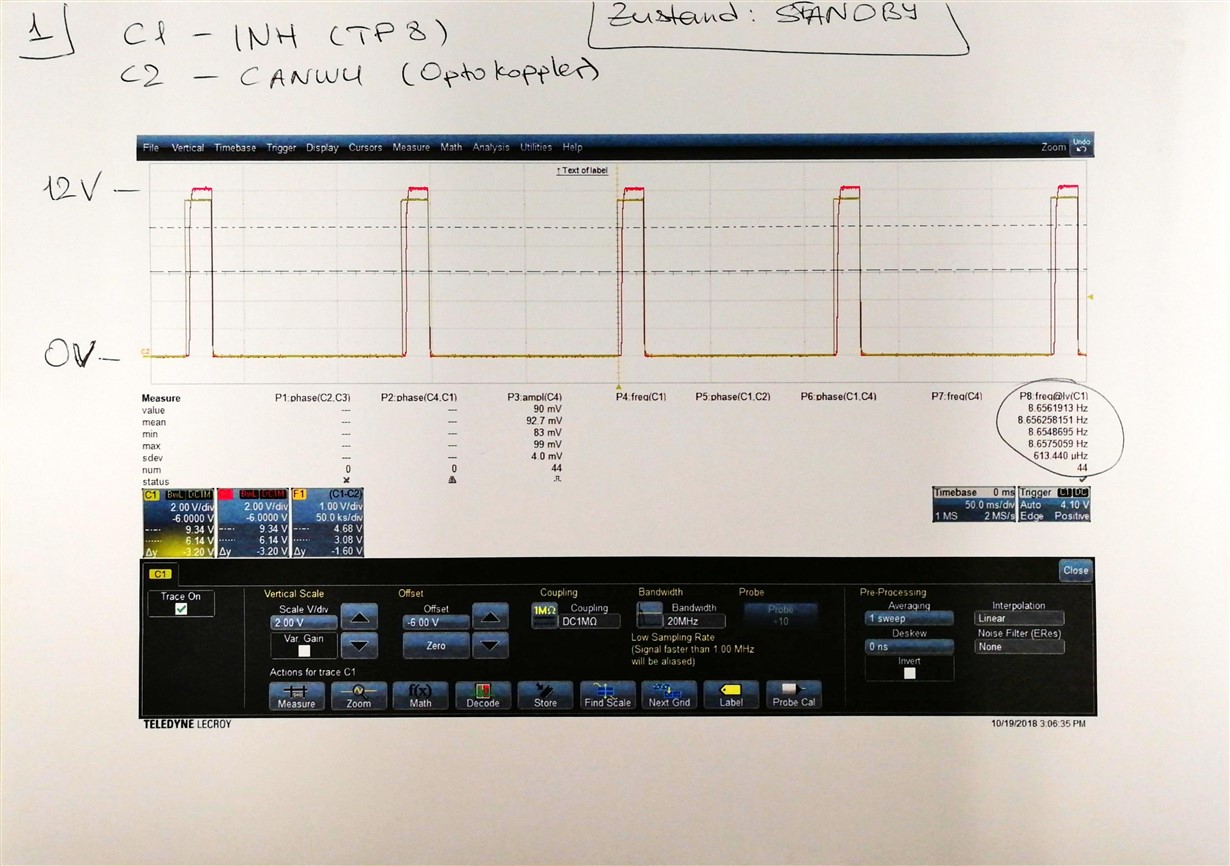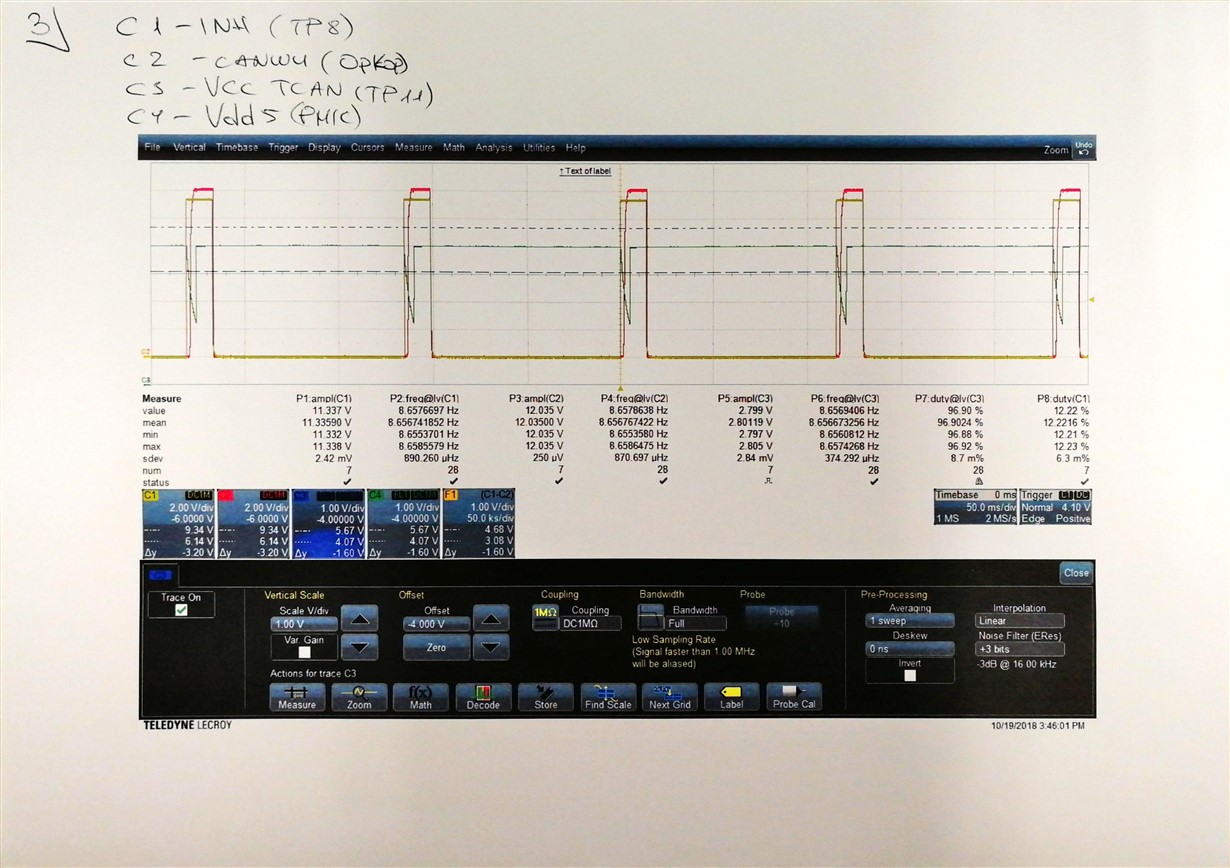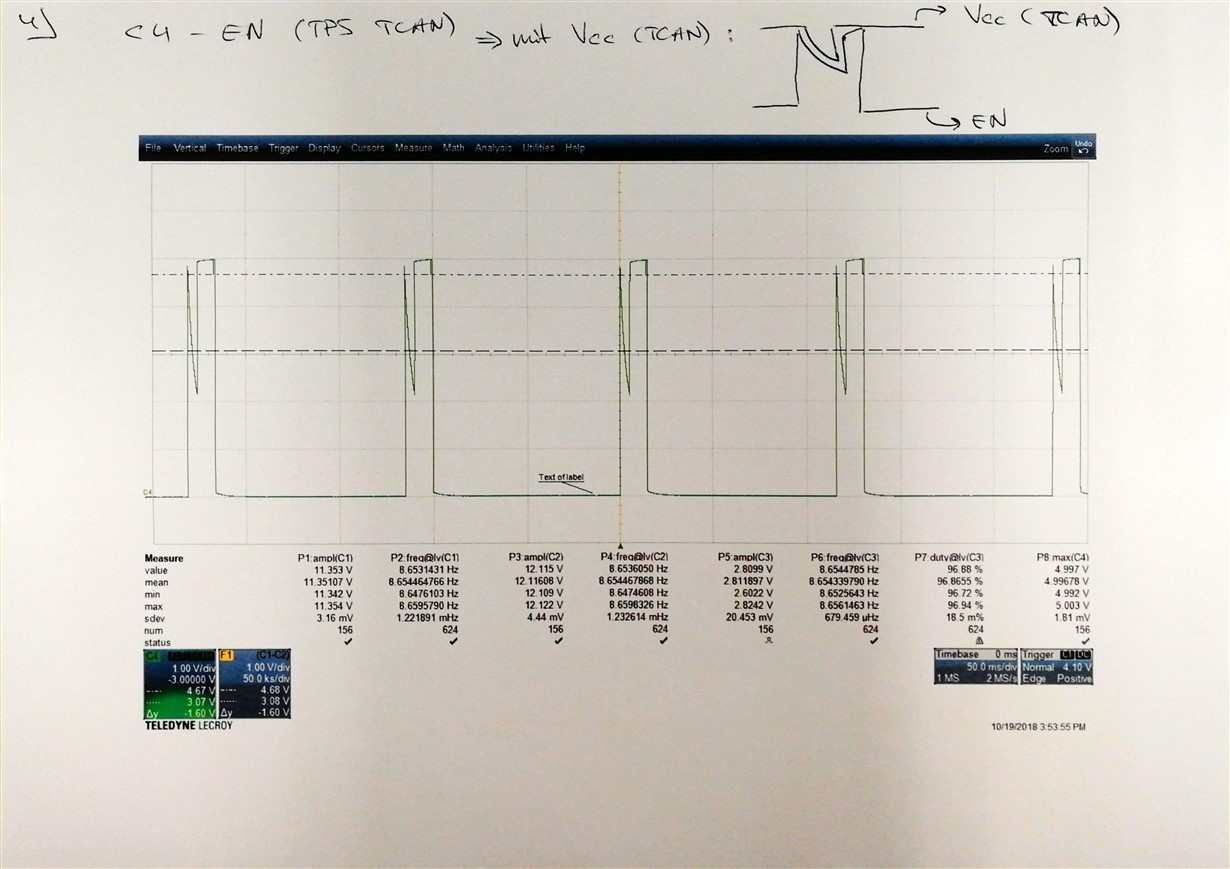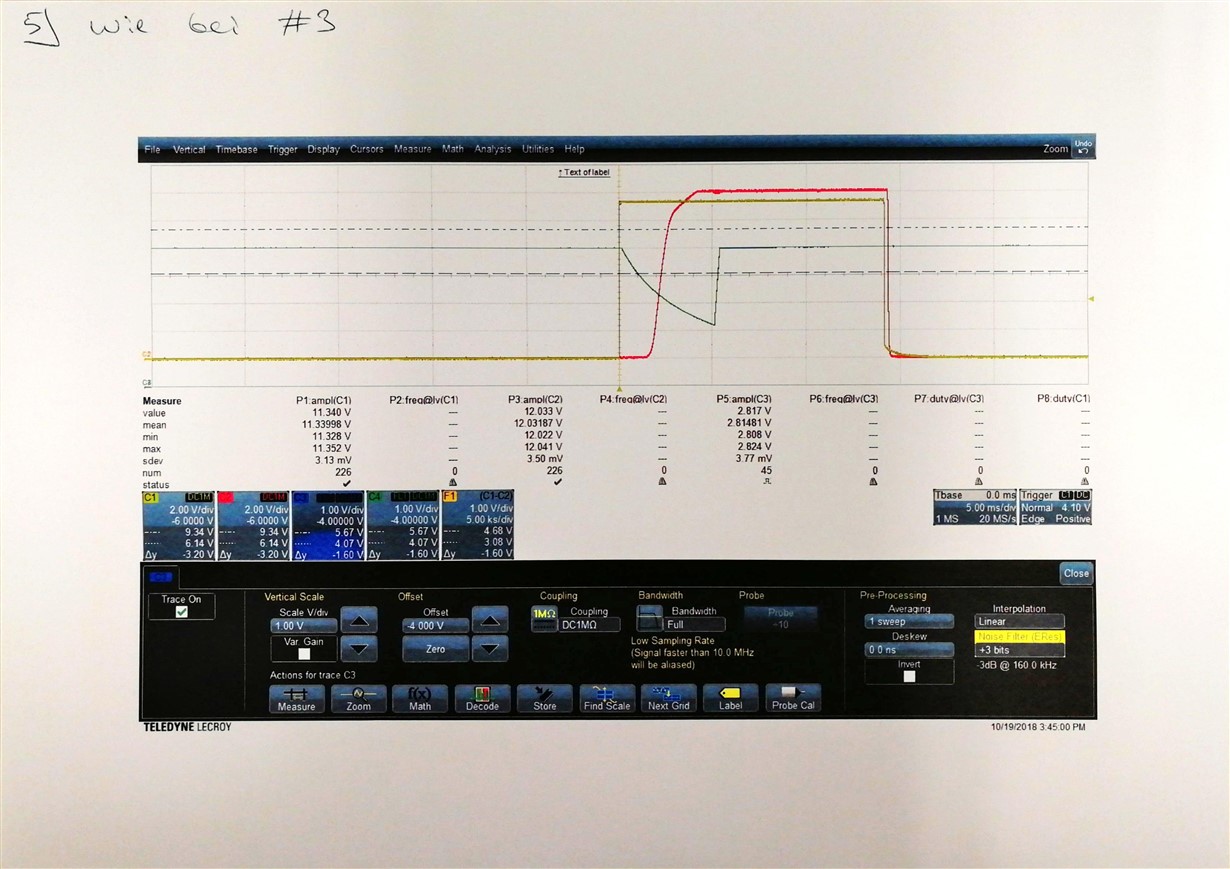Other Parts Discussed in Thread: TCAN1043HG-Q1,
Hello everyone,
I am currently using the TI product TPS65381EVM with TPS65381A-Q1 PMIC and evaluation modul TCAN1043HG-Q1. Vsup of TCAN is connected with an external voltage source = 12 V and Vcc of TCAN is connected with VDD3/5 = 5 V on PMIC.
My purpose is to leave STANDBY state by changing CANWU_L bit to 1. As I suspect, I can change CANWU_L bit connecting INH pin on TCAN with CANWU_C pin on PMIC. So when PMIC is in STANDBY, TCAN gets no voltage from PMIC and goes also in Sleep Mode (INH is floating). If I send any CAN message to TCAN, wake up event occurs and INH pin will be set HIGH = gets 12 V. At this moment I've expected PMIC goes to RESET, DIAGNOSTIC and then ACTIVE state, but it stays in STANDBY. IGN pin is not connected.
What am I doing wrong? Thanks for your attention.







